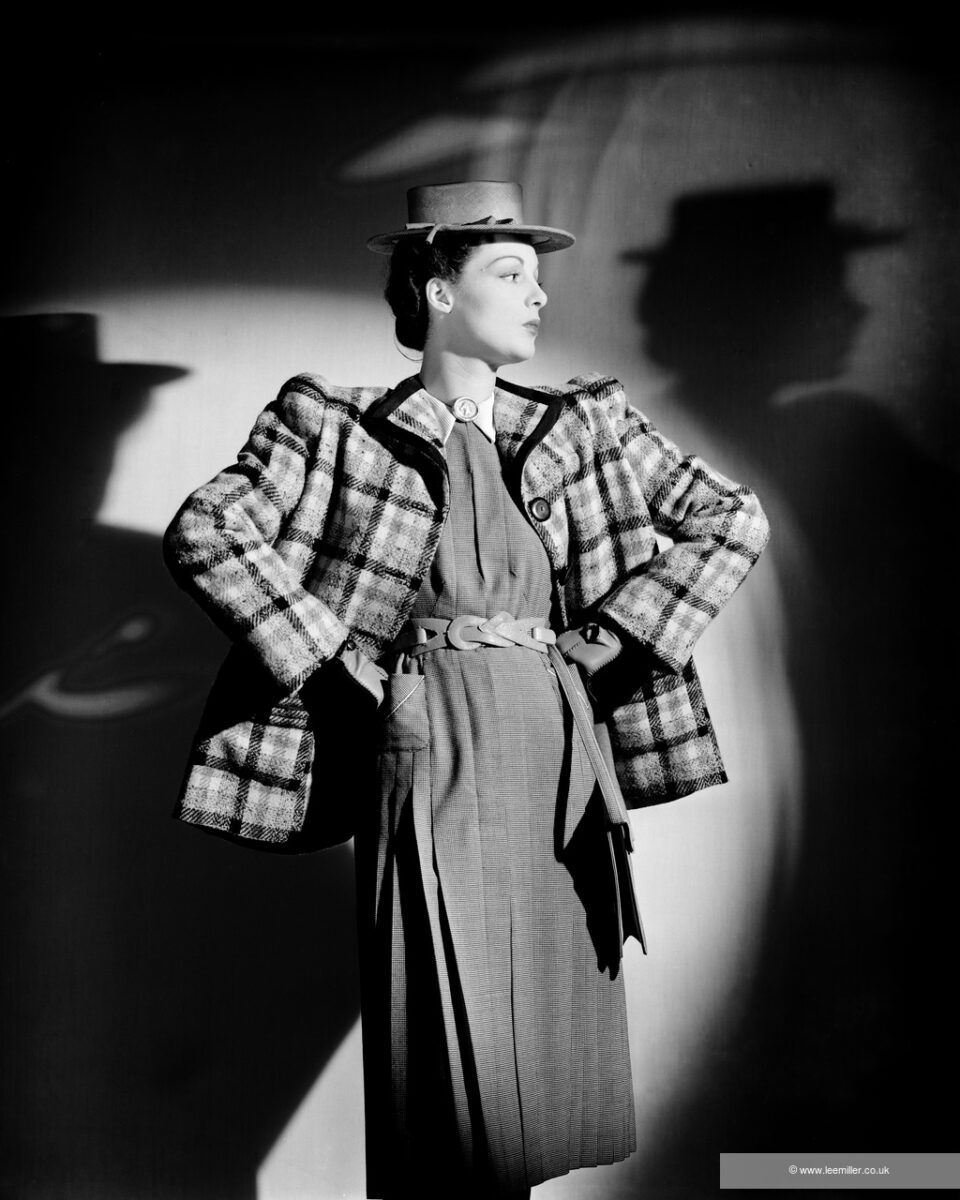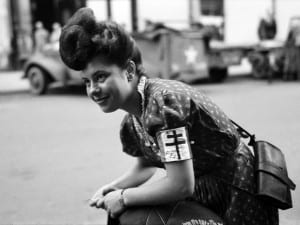A woman stretches upwards, face tipped back, arms reaching towards the sky, her entire form shimmering silver. Shot in 1942, this striking solarised portrait isn’t what comes to mind when you think of Lee Miller’s (1907-1977) wartime work for British Vogue – hard hitting reportage showing weary nurses on the frontline, women accused of collaboration and ex-prisoners of the newly liberated Dachau concentration camp. But she also shot a great many fashion editorials for the magazine during this time – and this, less familiar, aspect to Miller’s wartime work is the focus of an exhibition opening at Farley’s House and Garden.
The former residence of the photographer and her husband Ronald Penrose was saved from closure through a successful crowdfunding campaign last year. Now, visitors can explore more than 60 of Miller’s fashion images shot between 1939 and 1944 for British Vogue. Many of these works have rarely been seen before. They showcase the styles of the time – graceful gowns, sharp tweed suits by top designers such as Norman Hartnell, Digby Morton, Hardy Amies and Bianca Moscan. In one such monochrome image, a model appears in a sheer dress and pearls, immaculately poised, hat perched neatly on her head. It’s a picture of escapism and luxury; there’s no clue to the turmoil engulfing the world outside the studio walls.
Fashion was second nature to Miller, who started her career in the 1920s as a model in her home city of New York for Vogue and other publications, before moving to Paris where she became the lover, muse and collaborator of Man Ray. She went on to establish an extraordinary photographic output, spanning Surrealist art, fashion and photojournalism. Miller had initially faced rejection when she applied to work as a photographer for British Vogue, taken on instead as a studio assistant. In the end, her moment came during WWII – whilst male photographers were away on service.

Shooting fashion spreads whilst bombs fell on London was far from straightforward. In a 1941 letter to her parents, Miller writes about “working with the neighbouring buildings still smouldering – the horrid smell of wet charred wood – the stink of cordite – the fire hoses still up the stair cases.” But she soldiered on. As British Vogue’s then editor Audrey Withers said: “she has borne the whole weight of our studio production through the most difficult period in [the magazine’s] history.” Miller’s resourcefulness, style and imagination runs throughout this body of work, spilling over into her reportage. Moments of surreal beauty arise from the brutality of war; it’s a testament to the power of creativity and resilience.
Lee Miller: Fashion in Wartime Britain opens 20 May at Farley’s House and Garden. Advance booking advised. Find out more here.
An accompanying photography book of the same name will be available from www.leemiller.com from 26 March.
Words: Rachel Segal Hamilton
Image Credits:
1. Lee Miller, Corsetry, Solarised Photographs, Vogue Studio, London, England, 1942. © Lee Miller Archives, England 2020. All rights reserved. leemiller.co.uk
2. Lee Miller, London Collection [Model Meredith], Vogue Studio, London
England 1941 © Lee Miller Archives, England 2020. All rights reserved. leemiller.co.uk
3. Lee Miller, Hats, Vogue Studio, London, England 1942 © Lee Miller Archives, England 2020. All rights reserved. leemiller.co.uk
4. Lee Miller, Self Portrait with sphinxes, Vogue Studio, London England 1940 © Lee Miller Archives, England 2020. All rights reserved. leemiller.co.uk







